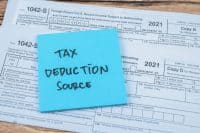
The “4% rule” is a retirement golden rule for many who are preparing to leave the labor market. The rule of thumb, which entails withdrawing 4% of your net worth per year to cover living expenses in retirement, can hold up, even when times aren’t all so good. Of course, the percentage you choose to withdraw can be higher (more aggressive) or lower (more conservative).
But the key is that you find the right drawdown percentage that works for you and your unique qualities. Your portfolio’s asset allocation (stocks versus bonds, gold, real estate, and other assets), risk tolerance, life expectancy, and monthly budget are just some of the things to consider when “subscribing” to such a “rule” for your retirement.
Key Points
-
The 4% rule of thumb works fine for many. However, a more flexible approach could be key to faring best in retirement.
-
4 million Americans are set to retire this year. If you want to join them, click here now to see if you’re behind, or ahead. It only takes a minute. (Sponsor)
Inflation and other risks warrant thinking beyond the conventional retirement rules.
Undoubtedly, things have gotten insanely expensive in recent years. And there may not be all too much in the way of relief on the horizon, especially if tariffs and rate cuts (yes, President Trump still wants to see the Fed lower rates) are in the forecast. On the other hand, perhaps the AI revolution could cause a fast-acting deflationary effect on prices. It’s really hard to tell where inflation is going next. A case for higher or lower inflation can made for the next several years.
Either way, as it stands today, inflation is picking up again, with the latest CPI (consumer price index) reading coming in hot, surging to 3% year over year, and causing a bit of stock market volatility in the process.
The key takeaway is that inflation is hard to predict, and it can deliver many jabs to your retirement nest egg in the near and distant future. Such inflation (or lack thereof) should be prepared for when picking a percentage to drawdown, which, I believe, should, in part, be influenced by your asset allocation.
With life expectancies poised to move upward again (thanks in part to new technologies), retirees may wish to err more on the side of caution with their withdrawal rates. For those seeking to retire a few years or decades before a traditional retirement age, I’d argue that even more caution is warranted. It’s hard to predict macroeconomic events for any given year. It’s even harder to project them over the next decade.
Perhaps it’s better to be more flexible than follow a rule of thumb for the entirety of one’s retirement.
That’s why it’s shrewd to expect a few curveballs to be thrown your way eventually and take market projections with a very fine grain of salt. Things don’t always end up the way we envision them!
For an early retiree in their 40s, they may need a nest egg to sustain them for half a century (or even more)—that’s a big ask from a retirement fund. And while a 4% rule can be enough to get the job done, I’d argue that it’s smarter to be more agile when it comes to drawdown rates.
Whether that means having the means to shift gears to a 2-3% withdrawal rate in bear markets and recessions (pulling back on expenses) or having more exposure to less risky, passive, income-paying securities, I do think younger retirees need to be more willing to roll with the punches rather than sticking with one rule of thumb throughout their retirement. If you’re retiring for the next 50 years or so, the odds of having zero nasty recessions (or perhaps a depression) are low, in my view.
As such, a nest egg stress testing is in order.
Will you be on the ropes if the stock market were to crash 50% amid retirement? And would you have the means to switch gears and ride out the turmoil without having to sell stocks at a significant loss? Are you flexible with transitioning from a comfortable retirement to a frugal one if such a market meltdown happens?
If the answer is no to any of these questions, perhaps it’s shrewd to save up enough so that one will be able to withstand such storms in retirement.
The bottom line
So, does the 4% rule still apply to early retirees? It can. But I believe the earlier the retirement, the more caution should be practiced.
Whether that means being flexible with drawdown rates, keeping a fatter cash cushion, or embracing defensive dividends, it’s worth the while to have a more personalized retirement strategy, if not for the betterment of the long-term sustainability of one’s nest egg for the invaluable peace of mind when crisis eventually does hit global markets.
Take Charge of Your Retirement In Just A Few Minutes (Sponsor)
Retirement planning doesn’t have to feel overwhelming. The key is finding expert guidance—and SmartAsset’s simple quiz makes it easier than ever for you to connect with a vetted financial advisor.
Here’s how it works:
- Answer a Few Simple Questions. Tell us a bit about your goals and preferences—it only takes a few minutes!
- Get Matched with Vetted Advisors Our smart tool matches you with up to three pre-screened, vetted advisors who serve your area and are held to a fiduciary standard to act in your best interests. Click here to begin
- Choose Your Fit Review their profiles, schedule an introductory call (or meet in person), and select the advisor who feel is right for you.
Why wait? Start building the retirement you’ve always dreamed of. Click here to get started today!
Thank you for reading! Have some feedback for us?
Contact the 24/7 Wall St. editorial team.




